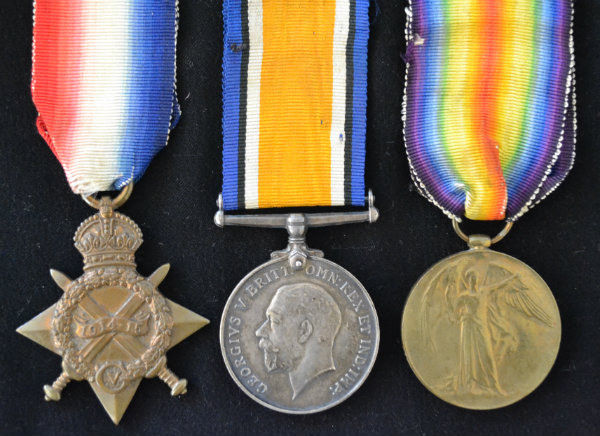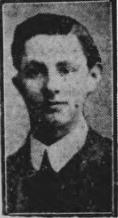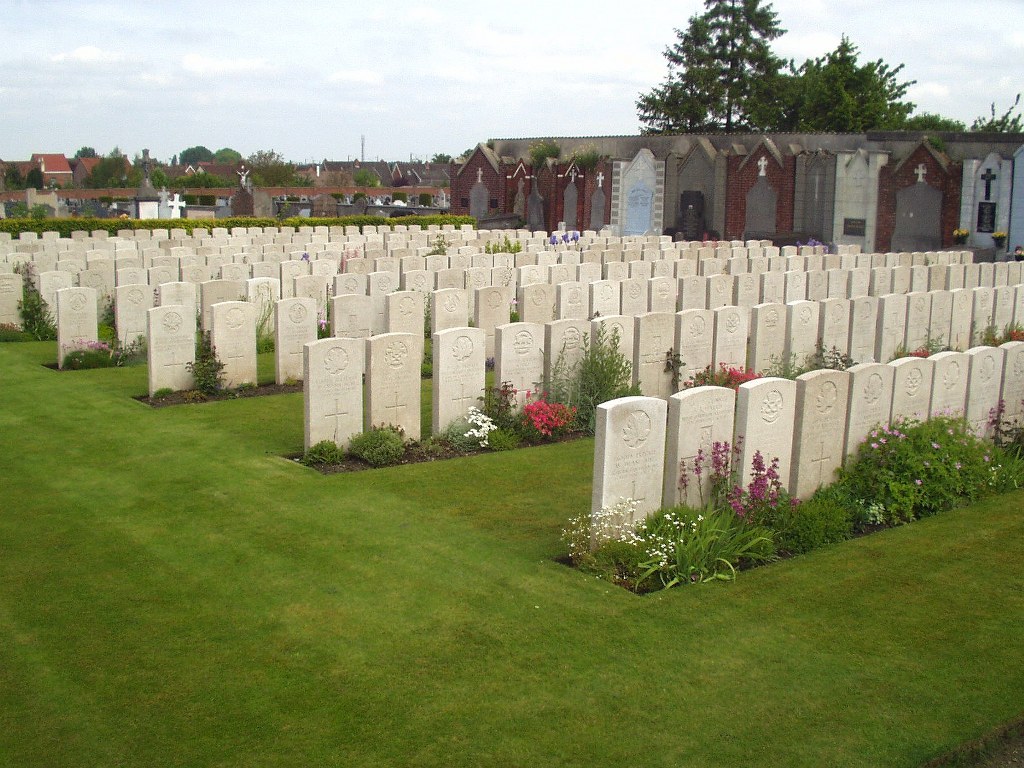Personal Details
Born in Wrenbury, Nantwich, Cheshire in 1893, the second son of William and Mary Cartwright of Newcastle Crossing, London Road, Nantwich, Cheshire.
The 1911 census shows William as servant to Henry Tollemache at Dorfold Hall, Acton, Nantwich, Cheshire.
Military Details
Regiment : 112th Battery, 24th Brigade, Royal Field Artillery
Rank : Gunner
Service Number : 4853
Died of wounds; France 15 August 1917 Aged 24

The 1914 Star (also known as 'Pip') was authorised under Special Army Order no. 350 in November 1917 and by an Admiralty Fleet Order in 1918, for award to officers and men of the British and Indian Expeditionary Forces who served in France or Belgium between 5 August and midnight of 22–23 November 1914. The former date is the day after Britain's declaration of war against the Central Powers, and the closing date marks the end of the First Battle of Ypres.
The 1914–15 Star (also known as 'Pip') was instituted in December 1918 and was awarded to officers and men of British and Imperial forces who served against the Central European Powers in any theatre of the Great War between 5 August 1914 and 31 December 1915. The period of eligibility was prior to the introduction of the Military Service Act 1916, which instituted conscription in Britain.
The British War Medal (also known as 'Squeak') was a silver or bronze medal awarded to officers and men of the British and Imperial Forces who either entered a theatre of war or entered service overseas between 5th August 1914 and 11th November 1918 inclusive. This was later extended to services in Russia, Siberia and some other areas in 1919 and 1920. Approximately 6.5 million British War Medals were issued. Approximately 6.4 million of these were the silver versions of this medal. Around 110,000 of a bronze version were issued mainly to Chinese, Maltese and Indian Labour Corps. The front (obv or obverse) of the medal depicts the head of George V. The recipient's service number, rank, name and unit was impressed on the rim.
The Allied Victory Medal (also known as 'Wilfred') was issued by each of the allies. It was decided that each of the allies should each issue their own bronze victory medal with a similar design, similar equivalent wording and identical ribbon. The British medal was designed by W. McMillan. The front depicts a winged classical figure representing victory. Approximately 5.7 million victory medals were issued. Interestingly, eligibility for this medal was more restrictive and not everyone who received the British War Medal ('Squeak') also received the Victory Medal ('Wilfred'). However, in general, all recipients of 'Wilfred' also received 'Squeak' and all recipients of The 1914 Star or The 1914/1915 Star (also known as 'Pip') also received both 'Squeak' and 'Wilfred'. The recipient's service number, rank, name and unit was impressed on the rim.
Further Information
Report in the Nantwich Guardian 31st August 1917 regarding the death of William Cartwright
“Mrs. Cartwright, 31, Station-view, Nantwich, has been informed that her son, Gunner William Cartwright, R.F.A., has died from the effects of gas poisoning. The chaplain wrote informing her that he had been removed to hospital, suffering from gas poisoning, and in a subsequent letter said:-
“It is with great regret that I have to inform you that your boy passed away within a few hours after I wrote my last letter. He was very ill, and although everything was done for him he became weaker, and lost consciousness, and died quite peacefully. Please accept my sincere sympathy in your great sorrow. He died nobly and gave his life for his country.”
The second-lieutenant of his section wrote offering his sympathy and in explaining how Gunner Cartwright met his death said: “The battery had been in action pending an attack by our infantry, and your son had just managed to snatch a few hours’ sleep when a bombardment with gas shells occurred. One of them penetrated a dugout occupied by him and some others. Unfortunately, he had mislaid his gas mask. Everything that could possibly be done for him was carried out by the medical orderly, and he was sent down to the casualty clearing station as soon as possible. The funeral was attended by an officer’s party. Since joining the battery on the 28th June last year your son had done very good work, and shown excellent devotion to duty, and will be much missed by all his comrades.”
A letter of sympathy was received from the captain, who said that it would be some little consolation for Mrs. Cartwright to know that her son was a good soldier, and well liked in the battery, where he would be greatly missed.
Gunner William Cartwright, who was 23 years of age, joined the Army two years last Whitsuntide, along with six other companions. Before the war he was in the service of Mr. Henry Tollemache, as footman. In February, 1916, he was invalided home from the front. Gunner Cartwright has a brother also serving in the Army.”
Nantwich Guardian 31st August 1917
If you can provide any further information on William Cartwright please get in touch by leaving a comment below, using our Contact Form or by calling in to Whitchurch Heritage Centre.
Information provided by Whitchurch Museum and Archives


